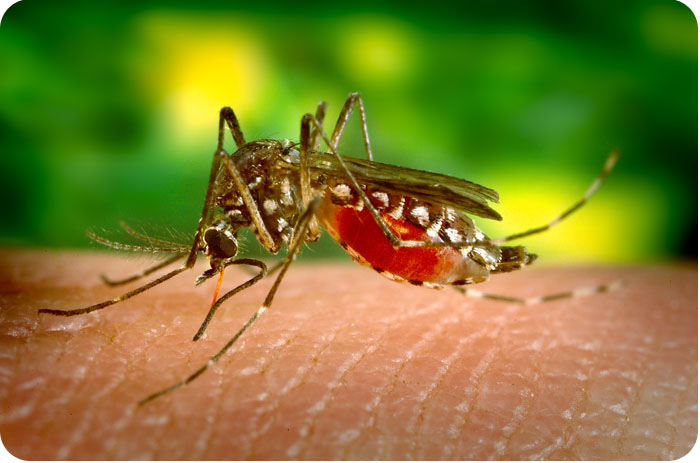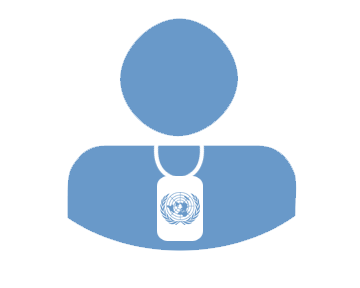
Current Information on Zika Virus
Last Updated: 16 July 2018

Zika virus disease is caused by the Zika virus, which is spread to people primarily through the bite of an infected mosquito (Aedes aegypti and Aedes albopictus). The virus can also be transmitted through sex. While most people who get infected have no symptoms, of those who do get ill, the most common symptoms are fever, rash, joint pain, and red eyes. The illness is usually mild with symptoms lasting from several days to a week. Severe disease requiring hospitalization is uncommon.
In early 2016, there was a rise in the spread of Zika virus in Brazil which was accompanied by an unprecedented rise in the number of children being born with microcephaly. In addition, several countries reported a steep increase in Guillain-Barre syndrome. Based on a systematic review of the scientific literature, the WHO concluded that Zika virus infection during pregnancy is a cause of congenital brain abnormalities, including microcephaly, and is also a trigger of Guillain-Barre syndrome. Zika continues to spread geographically to areas where mosquitoes are present that can transmit the virus. For more information, please refer to the WHO's Zika website.
To date, multiple countries or territories have reported microcephaly and other central nervous system (CNS) malformations potentially associated with Zika infections, or suggestive of congenital infection according to the WHO. Currently, the WHO is investigating these associations with the Zika Virus Research Agenda.
In light of these events, the UN Medical Services Division (MSD), as an occupational health service with an obligation to manage occupational exposure to harm for UN personnel, has developed a comprehensive set of recommendations for specified risk categories, including pregnant and non-pregnant UN personnel and dependents who reside in, or plan to travel into any areas with Zika virus transmission as listed below. This risk mitigation plan as found below will be updated as new information and guidance become available.
Please consult this Risk Mitigation Plan (English / French) and be sure to implement MSD's recommendations for the risk category that you fall under.
For further information, please consult this UN Medical Directors’ Staff Information Brochure on Zika Virus.
MSD advises that pregnant UN personnel should not undertake duty travel or relocate to any areas with Zika virus transmission. Women who are seeking pregnancy should obtain individual advice from their medical practitioner on risk management regarding their plans to travel into such areas. All UN personnel travelling into such areas should closely follow the UN Medical Services Division: Advice On Protection Against Mosquito Bites (English).
For a detailed list of areas with Zika virus transmission please refer to the Center for Disease Control’s (CDC) webpage which reflects areas with risk of Zika.
Zika Virus Resources
Below are resources you may consult for more information on Zika and precautions to take when travelling to areas in which the virus has spread. Please email msdpublichealth@un.org if you have any questions related to Zika virus.
 Medical Services Division (MSD) Guidance Documents
Medical Services Division (MSD) Guidance Documents
- UN Administrative Guidelines for Offices in Areas with Zika Virus Disease (Zika) Outbreaks
- UN Medical Services Division: Risk Mitigation Plan
- UN Medical Services Division: Advice On Protection Against Mosquito Bites (English)
- UN Medical Services Division: Advice On Protection Against Mosquito Bites (French)
- UN Medical Services Division: Advice On Protection Against Mosquito Bites (Portuguese)
- UN Medical Services Division: Advice On Protection Against Mosquito Bites (Spanish)
- UN Medical Services Division: Best Management Practice for Mosquito Control Program for UN Duty Stations (English)
- UN Medical Services Division: Best Management Practice for Mosquito Control Program for UN Duty Stations (French)
- UN Medical Services Division: Best Management Practice for Mosquito Control Program for UN Duty Stations (Portuguese)
- UN Medical Services Division: Best Management Practice for Mosquito Control Program for UN Duty Stations (Spanish)
- UN Medical Services Division: Case Report Form for Zika and Related Conditions
- UN Medical Services Division: Guidelines for ICD Coding of Zika and Related Conditions
- UN Medical Services Division: Instructions for How To Enter ICD Coding in Earthmed for Zika and Related Conditions
- UN Medical Services Division: Preparedness Checklist for Aedes-Affected (but not Zika-Affected) Duty Stations
- UN Medical Services Division: Zika and Related Outcomes - Guidelines on Notification to MSD
- UN Medical Services Division: Zika Virus Information Leaflet #1 for UN Personnel (English)
- UN Medical Services Division: Zika Virus Information Leaflet #1 for UN Personnel (French)
- UN Medical Services Division: Zika Virus Information Leaflet #1 for UN Personnel (Portuguese)
- UN Medical Services Division: Zika Virus Information Leaflet #1 for UN Personnel (Spanish)
- UN Medical Services Division: Zika Preparedness Checklist for Zika-Affected Duty Stations
 Zika Resources for UN Staff
Zika Resources for UN Staff
World Health Organization (WHO):
Pan American Health Organization (PAHO):
Centers for Disease Control and Prevention (CDC):
![]() The Emergency Preparedness and Support Team (EPST) recently launched the United Nations Emergency Notifications app for iPhone and Android smartphone or tablet devices. The information presented on this Zika Virus HR Portal website can be accessed through this app. The app will also send notifications to your device about important Zika updates and emergency information if and when necessary. Download the free app through the Apple Store for iPhones or Google Play for Androids.
The Emergency Preparedness and Support Team (EPST) recently launched the United Nations Emergency Notifications app for iPhone and Android smartphone or tablet devices. The information presented on this Zika Virus HR Portal website can be accessed through this app. The app will also send notifications to your device about important Zika updates and emergency information if and when necessary. Download the free app through the Apple Store for iPhones or Google Play for Androids.
